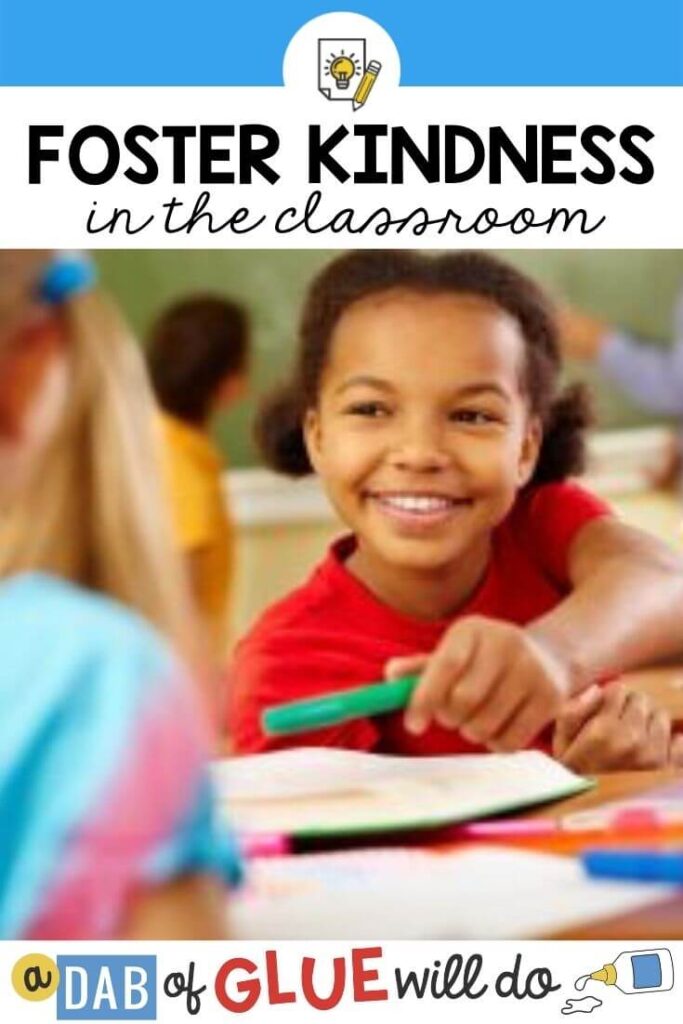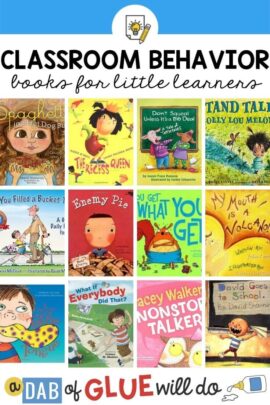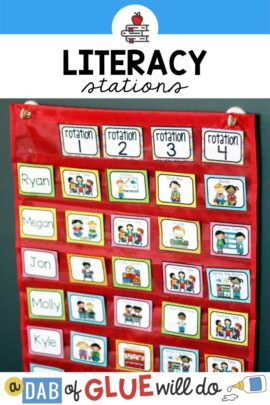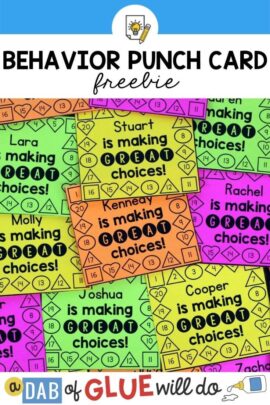Inside: Help foster and encourage kindness at school both in your classroom and out on the playground with these 6 simple tricks.
I have a confession to make.
I have favorite students…and they’re my “teacher’s pets.”
Now I know I’m not supposed to. But I do.
After hundreds and hundreds of students who have filed in and out of my classroom doors over the years, I have come to the conclusion who my favorite students are: they’re the kind kids.
The kids who help others without being asked, who include kids sitting off on their own, and who offer smiles to classmates, kids they don’t know, and the janitor.
Because I would rather have a classroom full of kids who struggle to read, who don’t know a 2 from a 6 and still can’t read “the” by December but who are kind, than a classroom full of academically advanced students who are mean-spirited.
At the end of the day, while it is my job to teach my students how to read and write and make a hypothesis, it’s also my job to help make them the best versions of themselves.
To help them learn empathy. And how to take turns. And how to be considerate.
All of those qualities fall under the umbrella of being a kind person.
And those are the kinds of students I want in my classroom.

How to Encourage Kindness at School
Some kids come into my classroom already kind. Whether they were genetically pre-dispositioned to be kind or their parents instill that value in them daily, some kids exude kindness.
Being kind feels natural for some kids.
But some kids- and let’s be honest, most kids-need extra practice and guidance and reminders to be kind.
So I let my students know right from the start of the year I value kindness. I showcase it. And I reward it.
And we talk about kindness often.
Here’s how I Create a Classroom Full of Kind Kids:
1. Praise Kindness
When I see a student being kind, I announce it to the class.
I stop everything we’re doing and I notice it, on purpose.
I praise the behavior, “That was a kind choice you made,” and I praise the student, “You are a kind kid and I love that.”
Kids notice what behaviors get adult attention and they emulate the behavior more often.
2. Reward Kindness
If you give out tickets or stickers or reward coupons or if you have students “clip up,” take the time to reward kindness.
If you have space, make a small bulletin board titled “Our Hearts are Full of Kindness” and add a paper heart every time you “catch” a student showing kindness to a classmate or staff member. The student can sign their name to the heart and you can write down what they did that was kind.
You can award “I’m a Kind Kid” Certificates or call students’ parents with a good news phone call (which all parents love to get), or pass out these “Caught Being Kind” Cards
3. Read Kindness books
Stock your library shelves with kindness themes and messages.
Take the time to read these books to your students and discuss the behaviors you value as a class.
Here are a few of my class’ favorite kindness books:
No Room for Elephants

The Invisible Boy

The Kindness Quilt

How Full Is Your Bucket?

4. Talk About Kindness with Kindness Discussion Starters
When you have a few extra minutes before the bell rings or you want to add a little more depth to your Morning Meetings, use these kindness discussion starters with your students.
Ask them questions like:
How does it feel when someone is unkind to you?
When you see someone playing on the yard by themselves, how do you think they feel and what could you do?
Have you ever felt lonely even if there were other kids nearby? How did you change that?
The 60 color-coded cards focus on kindness, including others, being helpful, being mindful of others, and how to be a good friend.
Meaningful conversations between your students are bound to occur when you dive into what it means to be a sounds like, feels like, and looks like to be a kind person.
these “Caught Being Kind” Cards
5. Brainstorm Ways Students Can Be Kind in Your Classroom
Kindness can be difficult to define in words, but it’s quite simple to brainstorm ideas on what kindness sounds like and looks like in your class.
Take some time to ask your students ways they can show kindness in class. Make a poster to hang in your classroom you can add to throughout the year.
Some ideas include:
- Take turns with supplies
- Offer to share a crayon when a friend needs a color
- Pick up something that fell if someone dropped it
- Return someone’s jacket or lunchbox if they left it on the playground.
- Take turns when talking
- Say “Yes, I’d love to” if someone wants to partner with you
- Scooch your chair in so classmates can pass behind you
- Sit criss-cross applesauce so classmates don’t trip on your legs
- Keep your hands and feet to yourself
- Praise and encourage classmates

6. Talk About Ways Kids Can Show Kindness Out on the Yard
A lot of “mean kid” behaviors happen during lunch and recess, away from our watchful eyes.
I let my kids know I check in on them during these times and I’m always on the lookout for kind behaviors. I also remind them the yard staff reports back all the kindness to me.
Brainstorm ways your students can be kind out on the yard:
- Invite kids to play with you and be an includer
- Say “yes” if someone asks if they can play
- Hand the ball back when it rolls towards you rather than kicking it
- Take turns with the equipment
- Pick up someone’s trash if it blows away
- Offer to sit with the classmate at the nut-free table if you have a safe lunch
- Sit with someone who is alone.
- Ask your friends what they would like to play.
- Don’t grab all the equipment and keep them to yourself.
- Keep your hands and feet to yourself
- When a classmate says “Stop” or “No,” listen to their words.

Because at the end of the day, if you foster and encourage kindness at school, the time you spend with your students in those four walls will be so much more enjoyable.
For you and for them.
You will have helped them become the best versions of themselves.
And since you have the power to influence and help create 20+ more kind people in the world every year, imagine the ripple effect it will have in your school and in your community.
Plus, you’ll have 20 more kids who make your list of favorite students.
But shhhh. Don’t tell anyone they’re your teacher’s pets.




[…] But it’s a simple fix. As teachers, we can foster and encourage kindness in our classrooms. […]